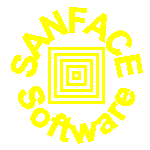
OK Tedi Mining Limited project
About OK Tedi Mining Limited
OK Tedi Mining Limited ("OTML") is a Copper and Gold mining operation in the Western Province of Papua New Guinea. OTML revenues last year accounted for approximately 10% of Papua New Guinea GDP.
The problem
The following document is a synopsis of a project OTML commenced in November 2000 and identifies the very positive outcomes for the company and our Vendors.The project scope was best described as "...a need to develop a more effective method of communicating with our Vendor Base..."
Our active Vendor database numbered over 1500 for the 14 months to February 2001. They accounted for some 56000 Purchase Orders and numerous Requests for Quotation and other facsmile expediting activity in excess of 100,000 transmissions each year. Our success rate in communicating with Vendors was less than acceptable. Our commercial documentation needed to be simplified and made more readable. Communication appeared to be all one way. The cost of our facsimile service was prohibitive.
We've used facsimile as our primary means of communicating with Vendors for some time. The facsimile process is labour intensive and requires paper documents to be handled many times by both parties. Just Imagine the cost in making 100,000 telephone calls each year, most of them metered STD/ISD and multiply that by the number of pages to be transmitted.
Our primary focus at OTML is Mining. We wished to implement a solution that would move us down the "e" path, based on software generally available both within OTML and at the Vendors' place of business. We also wanted a solution that was simple, easy to manage, provided a platform for all of our Vendors, and added value.
The biggest single hurdle was to make the solution flexible. If Vendors did not have email, Commercial documents are sent via facsimile. If Vendors had email then we wanted to send them email with the commercial documents attached.
Why txt2pdf PRO?
We wrote a piece of code (perl) that MIMS (our ERP) treats as a printer. Whenever a document is created in MIMS and that document is directed to a fax device, the perl script applies logic gathered from the ERP and determines the manner in which each document is sent. The document is included as an email attachment. The attachment is generally fixed in its format and content and secure to a point where someone would need to make a conscious effort to interfere with it.SANFACE Software provided their software called txt2pdf that produces the PDF attachments. We originally installed the shareware version but later procured the Professional Edition to remove some advertising and enable more elaborate formatting features. The txt2pdf resides on our UNIX server. The perl script when it discovers an email message, calls the txt2pdf, includes information on the format the document should take, watermarks, font, text styles, etc., and creates a PDF attachment.
PDF was the chosen format for the attachments as ADOBE Acrobat Readers are very cheap to obtain and install. PDF documents are not readily changeable. PDF will support XML formatting in the near future that we think will provide a future development path should we choose to go that route.
One excellent spin off is that we now use the same technology (email and the SANFACE Software txt2pdf) to run our internal reports. In the past we have run periodic and ad-hoc reports to printers. We now send them to whoever initiated the request via email and in the PDF format. We now make better use of available printing resources and provide a practical and economic means of distributing information company wide or indeed globally.
The cost of the project in total amounted to 10 days of programming and system testing plus the cost of the txt2pdf application. Pay back was inside the first few weeks.
Summary
In the first three months since its introduction we have achieved the following:- Vendors, representing 80% of our Purchase Order, RFQ and Expediting load are receiving their orders and other commercial documents by email.
- The next 75 Vendors representing up to 90% of the transactional load will be switched over to email by the end of June.
- Success rate on Vendors receiving orders has gone from 95% to 99%. The additional 1% being identified as problems we have yet to resolve internally.
- A significant reduction in our phone account based on the reduction in the number of phones calls made by the facsimile system.
- Order acknowledgments have tripled due to the ease in which email messages are able to be returned. This in itself has created a document management problem we've yet to address.
- Purchase Order duplications have reduced.
- Immediate feedback of non-receipt by the email server which uses better queuing facilities than the facsimile service.
- Vendor acceptance is high.
- We have reduced printed paper consumption both externally and internally by reducing our reliance on printed reports and making better use of the email system.
Authors
This synopsis was compiled jointly by:
|
Mathias Sikari. Systems Analyst Ok Tedi Mining Limited (no longer employed by Ok Tedi Mining Limited) |
Bryan Fletcher Logistics Systems Administrator Ok Tedi Mining Limited. Email: fletcher.bryan@oktedi.com |
Read the other projects
